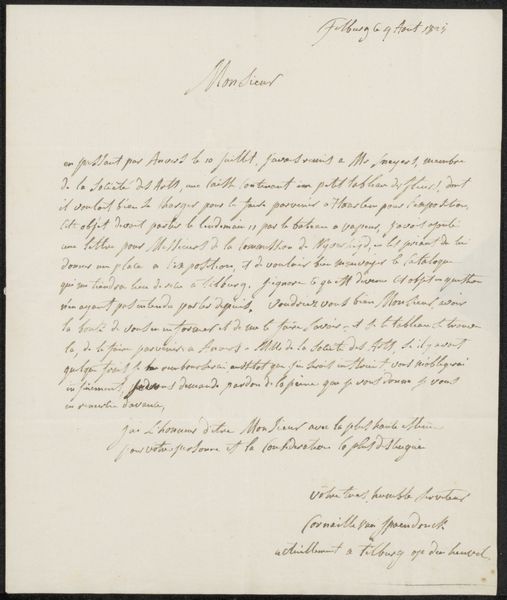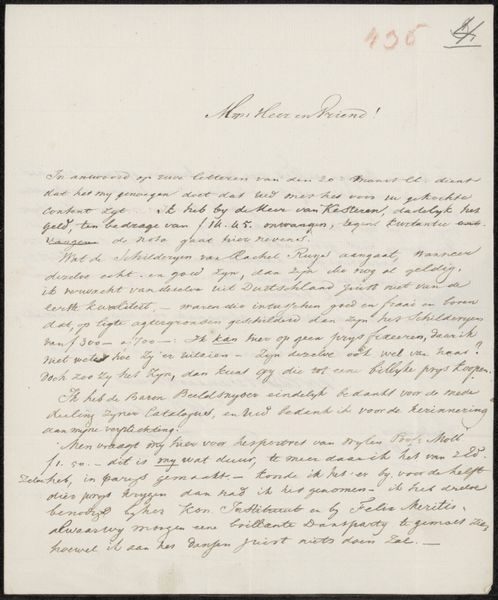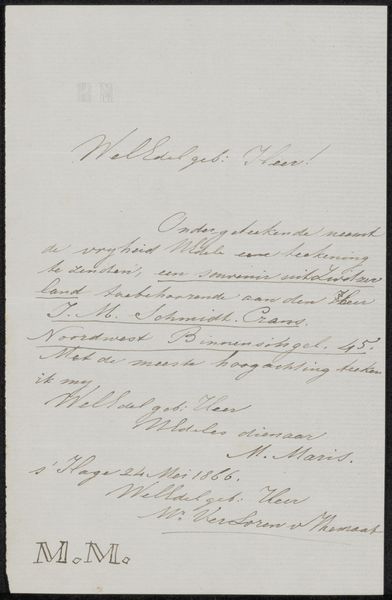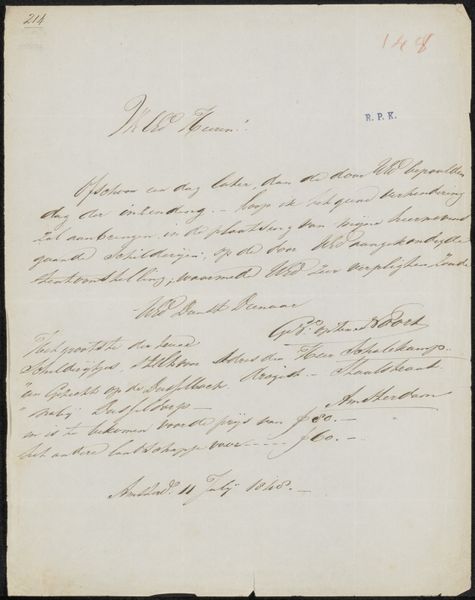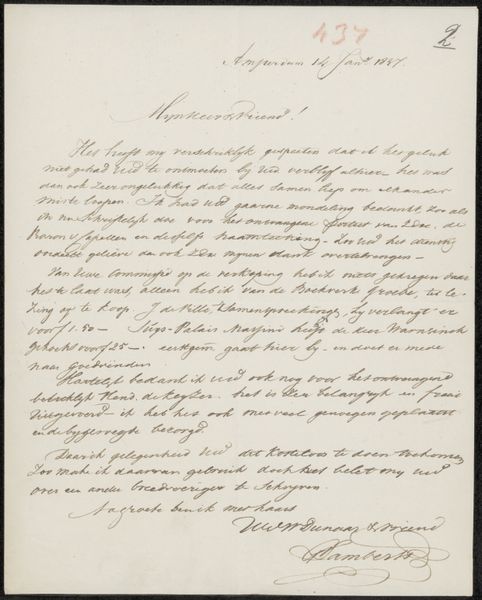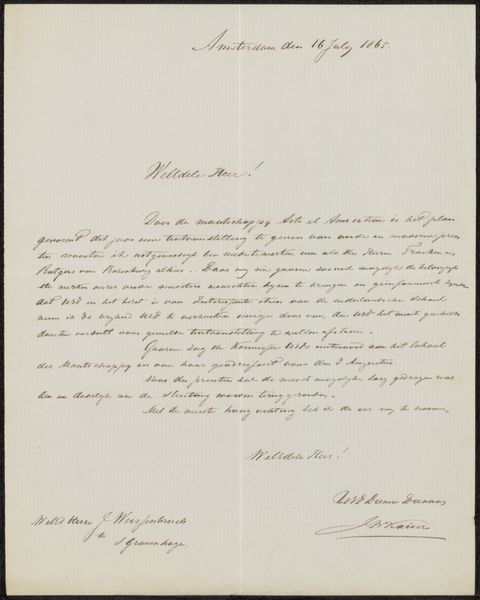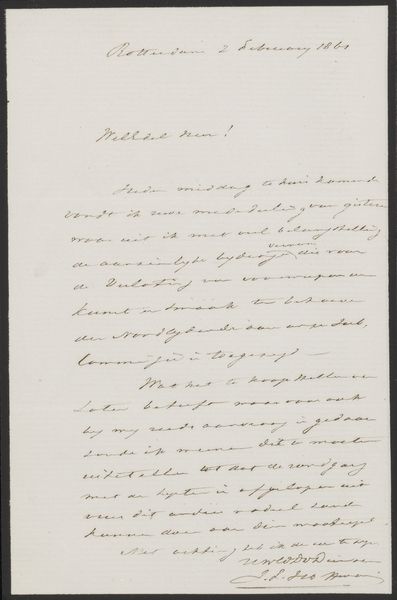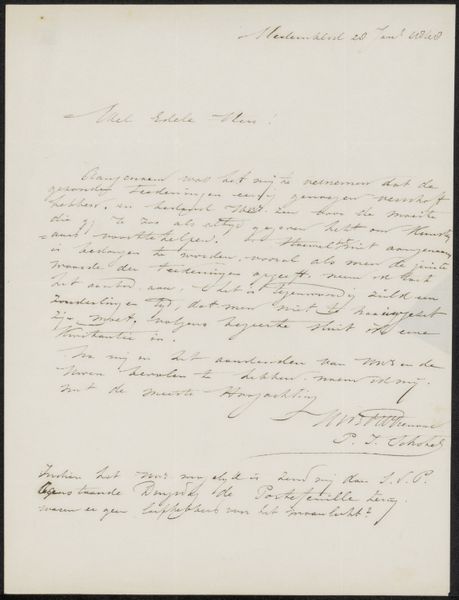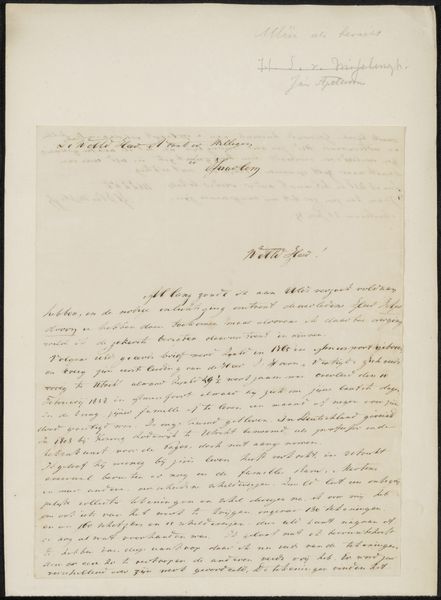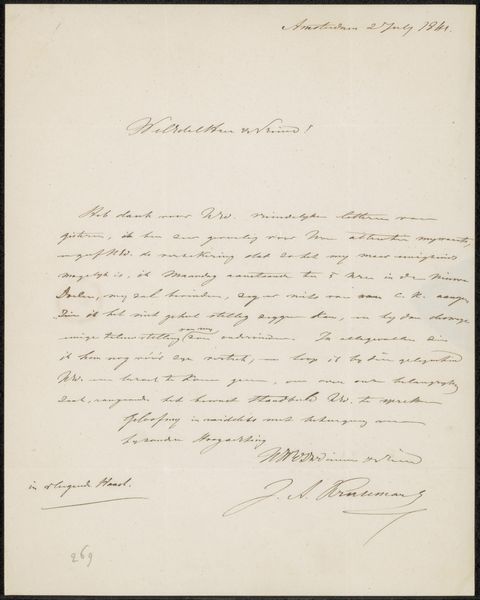
Brief aan Lambertus Hardenburg en Jan Weissenbruch, commissarissen van de kunstbeschouwing in Pulchri Studio Possibly 1847
0:00
0:00
drawing, paper, ink
#
portrait
#
drawing
#
paper
#
ink
#
calligraphy
Copyright: Rijks Museum: Open Domain
This letter was written by Johannes Mock in 1867, with ink on paper. While seemingly commonplace, both materials carry their own histories. Consider paper: Before the mid-19th century, it was made primarily from cotton and linen rags, a labor-intensive process. As demand grew, wood pulp became the dominant material, reflecting industrialization and mass production. In this context, the paper embodies shifts in labor practices and the increasing availability of materials. The ink itself, likely iron gall ink, was a standard writing medium, its permanence suggesting the writer's intent for a lasting record. The act of handwriting further emphasizes the personal nature of the communication. While the printing press had long been established, handwritten letters retained a sense of intimacy and directness, a connection between the sender and recipient that mass-produced print could not replicate. Thus, even a simple letter speaks volumes about the intersection of materials, making, and social context, urging us to look beyond the surface and consider the processes that give objects their meaning.
Comments
No comments
Be the first to comment and join the conversation on the ultimate creative platform.
